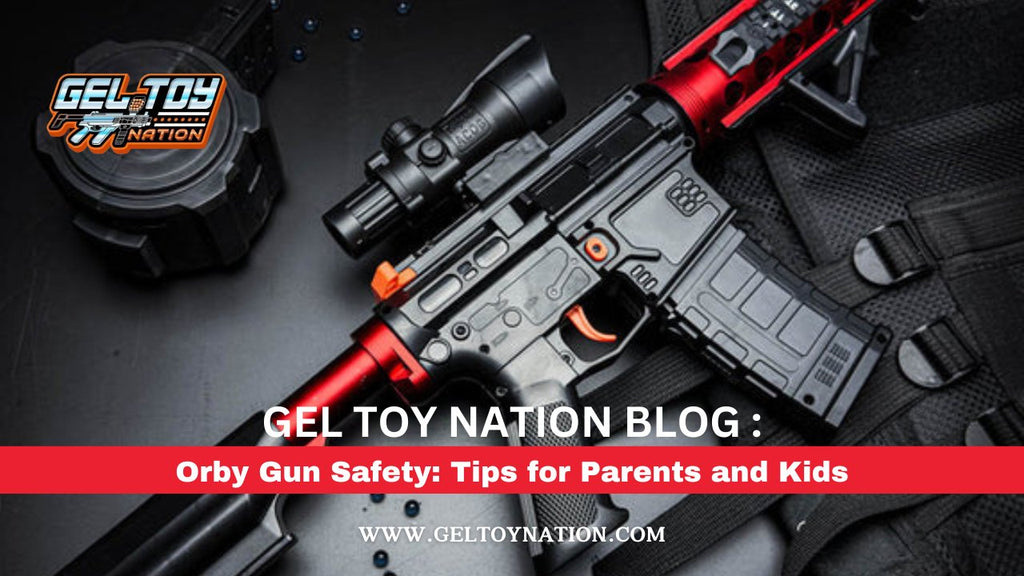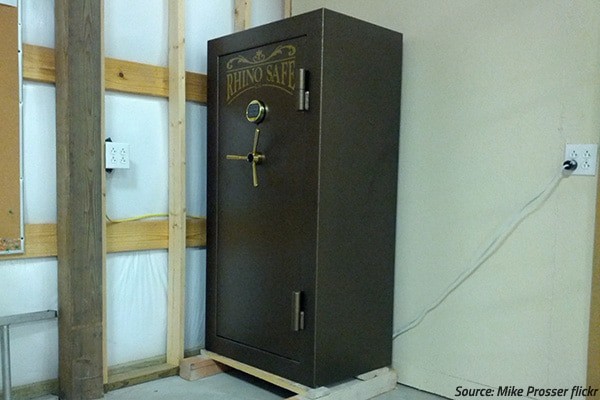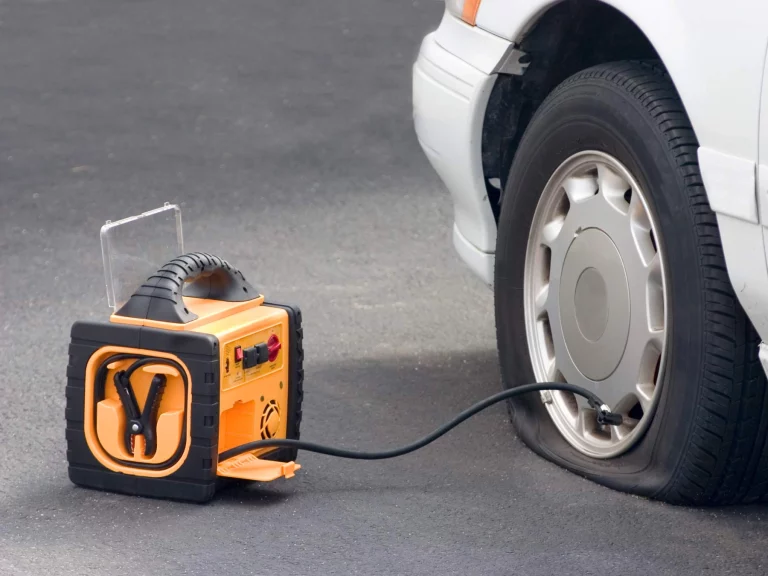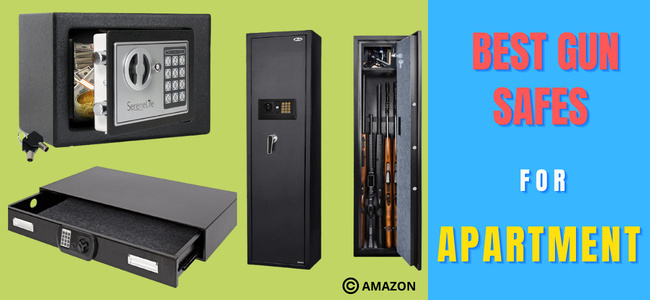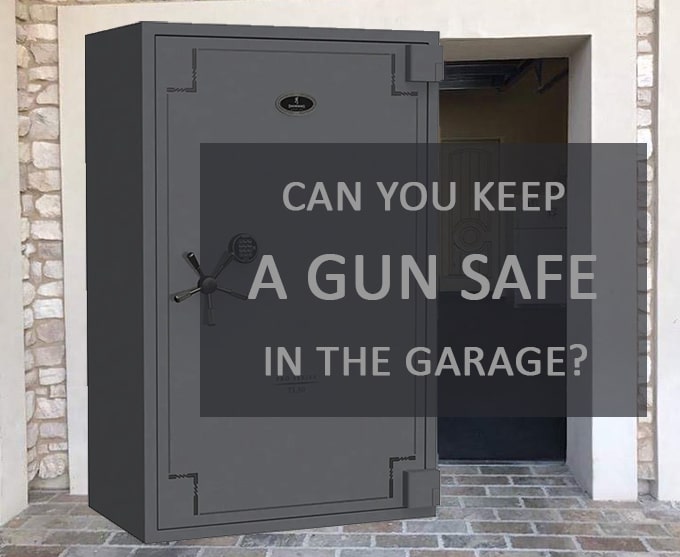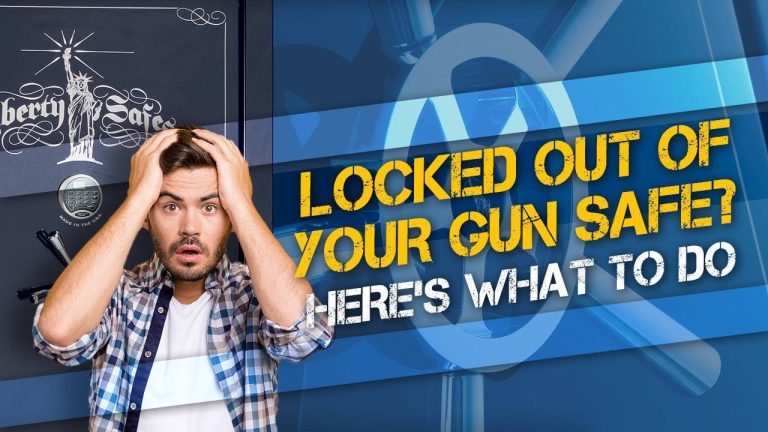Gun Safety Tips for Parents: Keep Your Kids Safe
Teach children about gun safety and keep firearms securely locked away. Ensure guns are unloaded and use gun locks.
Gun safety is crucial for families with children. As a parent, your primary responsibility is to protect your kids from potential dangers, including firearms. Teaching your children about the risks and proper handling of guns can prevent accidents. Store firearms securely, preferably in a locked safe, and always keep them unloaded.
Using gun locks adds another layer of security. Educate your kids about never touching a gun without adult supervision. These precautions help create a safer environment at home. Prioritizing gun safety can give you peace of mind and ensure your family stays protected.
Importance Of Gun Safety
The importance of gun safety cannot be overstated. Ensuring proper gun safety measures can save lives. Parents must take responsibility for firearm safety at home. This includes secure storage and educating children about gun dangers. Implementing these measures reduces the risk of accidents and injuries.
Protecting Your Loved Ones
Secure gun storage is essential to protect your family. Always store guns unloaded and locked away. Use a gun safe or lockbox for extra security. Keep ammunition separate from firearms. Make sure only responsible adults have access to the keys or codes.
- Store guns in a locked safe.
- Unload firearms before storage.
- Keep ammunition in a separate place.
Preventing Accidents
Preventing accidents is a key part of gun safety. Educate children about the dangers of guns. Teach them to never touch a gun without adult supervision. Explain the difference between real guns and toy guns.
| Safety Tips | Description |
|---|---|
| Education | Talk to kids about gun dangers. |
| Supervision | Always supervise children around guns. |
| Storage | Lock guns away from children. |
By following these tips, parents can ensure a safer home environment. Gun safety is crucial for preventing unnecessary tragedies. Always prioritize the well-being of your loved ones by practicing responsible gun ownership.
Educating Your Family
Gun safety starts at home. Parents must educate their families. Teach children about the dangers and responsibilities of guns. This helps prevent accidents. Here are some tips on educating your family.
Age-appropriate Lessons
Teach children based on their age. Young kids need simple rules. For instance, tell them never to touch a gun. Older kids can learn more details. Explain how guns work and why safety matters.
- For ages 3-6: No Touch Rule. If they see a gun, tell an adult.
- For ages 7-10: Basic Safety. Explain the parts of a gun and basic rules.
- For ages 11 and up: Detailed Safety. Discuss handling, storage, and the law.
Answering Questions
Children will have questions. Answer them honestly. Use simple words they understand. Do not scare them but be clear about risks.
- Listen to their concerns.
- Provide clear and honest answers.
- Encourage them to ask more questions.
Gun safety is a family responsibility. Start early and keep the conversation going. Your efforts will make a safer home for everyone.
Safe Storage Solutions
Ensuring the safety of your children around firearms is crucial. One of the best ways to ensure this is through safe storage solutions. Proper storage can significantly reduce the risk of accidental injuries. Let’s explore some effective methods.
Locking Mechanisms
Locking mechanisms are essential for secure gun storage. They prevent unauthorized access. Here are some popular options:
- Trigger Locks: These devices prevent the trigger from being engaged.
- Cable Locks: A cable is looped through the gun, blocking its operation.
- Gun Safes: These provide the highest level of security.
- Lock Boxes: Smaller than safes but still effective.
Using these mechanisms can greatly enhance your family’s safety. Always ensure locks are properly engaged.
Safe Locations
Choosing the right location for storing firearms is equally important. Consider these points:
- Out of Reach: Store guns high, beyond children’s reach.
- Hidden: Conceal storage areas to avoid attracting curiosity.
- Separate Storage: Keep ammunition in a different location from firearms.
- Stable Environment: Ensure the storage area is dry and stable.
Avoid placing firearms in obvious locations. Choose spots that are not easily accessible. This reduces the risk of accidental discovery by kids.
| Lock Type | Security Level | Recommended Use |
|---|---|---|
| Trigger Lock | Medium | Handguns |
| Cable Lock | High | Rifles and Shotguns |
| Gun Safe | Highest | All Firearms |
| Lock Box | High | Handguns and Small Firearms |
Following these safe storage solutions can help protect your family. Stay vigilant and prioritize safety at all times.
Proper Handling Techniques
Ensuring your child understands proper handling techniques for firearms is crucial. These techniques can prevent accidents and teach respect for firearms. Below, we outline essential safety rules and supervised practice tips to help you guide your child.
Basic Safety Rules
Teaching your child the basic safety rules is the first step. Here are the key points:
- Always treat a gun as if it is loaded. Never assume it is safe.
- Keep the muzzle pointed in a safe direction. This means away from people.
- Keep your finger off the trigger. Only touch it when ready to shoot.
- Know your target and what is beyond it. Be aware of the surroundings.
Supervised Practice
Supervised practice is essential for reinforcing safety rules. Follow these tips for effective practice sessions:
- Start with unloaded firearms. Ensure the gun is empty before practice.
- Use a safe practice area. Choose a controlled environment, like a gun range.
- Demonstrate proper handling. Show how to hold, aim, and store the firearm.
- Provide close supervision. Always watch your child while they practice.
- Give constructive feedback. Correct mistakes and praise good behavior.
By following these proper handling techniques, you can help ensure your child’s safety and confidence with firearms.
Emergency Preparedness
Being prepared for emergencies is vital for gun safety at home. Parents must have a plan and teach their children how to respond.
Creating A Safety Plan
Start by developing a clear safety plan. This plan should detail steps to take during an emergency. Make sure every family member knows the plan.
| Step | Action |
|---|---|
| 1 | Identify safe areas in your home. |
| 2 | Practice emergency drills regularly. |
| 3 | Ensure all family members understand how to call for help. |
Choose safe spots where family members can go during a threat. Practice these drills to ensure everyone knows what to do.
Teaching Response Actions
Teach children specific response actions during gun emergencies. They must know how to stay safe and seek help.
- Stay calm and quiet.
- Move to a designated safe area.
- Call for help using a phone or alert system.
Explain the importance of staying calm. Emphasize the need for quick and safe actions.
Use simple language and clear instructions. Repeat these steps often to ensure they remember.
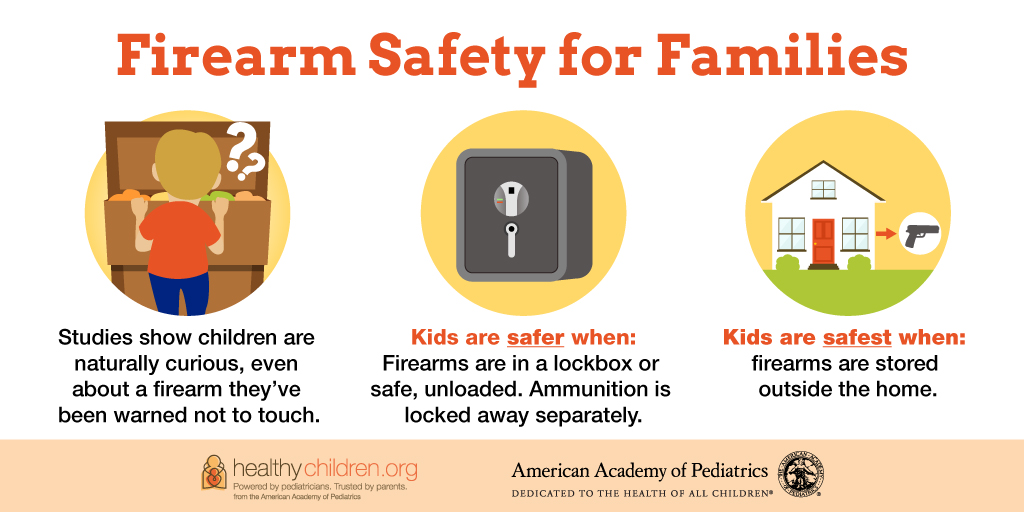
Credit: www.aap.org
Talking To Other Caregivers
Discussing gun safety with other caregivers is crucial. It helps ensure your child’s safety. Open communication builds trust and understanding.
Sharing Your Safety Plan
Explain your safety plan to other caregivers. This includes rules and guidelines about guns. Make sure they understand the importance of these rules.
- Store guns unloaded and locked.
- Keep ammunition separate and locked.
- Ensure keys are hidden and inaccessible.
Consider using a table to organize your safety plan:
| Rule | Description |
|---|---|
| Store Guns | Unloaded and locked. |
| Store Ammo | Locked and separate from guns. |
| Hide Keys | Keep keys hidden from children. |
Ensuring Consistency
Consistency is key in gun safety. Make sure all caregivers follow the same rules. This helps avoid confusion and keeps everyone safe.
- Discuss the safety plan regularly.
- Check for understanding and agreement.
- Reinforce the importance of following the plan.
Regular communication ensures everyone is on the same page. This helps maintain a safe environment for your child.
Recognizing Warning Signs
Understanding and recognizing warning signs is crucial for gun safety. Parents need to be vigilant about behavioral changes and access concerns. This awareness can prevent potential dangers.
Behavioral Changes
Children often show warning signs through behavioral changes. Look out for sudden mood swings or increased aggression. Notice if your child becomes withdrawn or isolates themselves from family and friends.
- Mood Swings: Sudden shifts in emotions can be a red flag.
- Increased Aggression: Watch for any uptick in hostile behavior.
- Isolation: If your child avoids social interactions, pay attention.
- School Performance: A drop in grades can indicate underlying issues.
Access Concerns
Ensuring children do not have access to firearms is essential. Always store guns securely and educate your children about gun safety.
| Action | Description |
|---|---|
| Secure Storage | Store guns in a locked safe or gun cabinet. |
| Safety Education | Teach children about the dangers of firearms. |
| Supervision | Always supervise your children around firearms. |
Following these tips can help prevent accidents. Stay informed and proactive about gun safety.
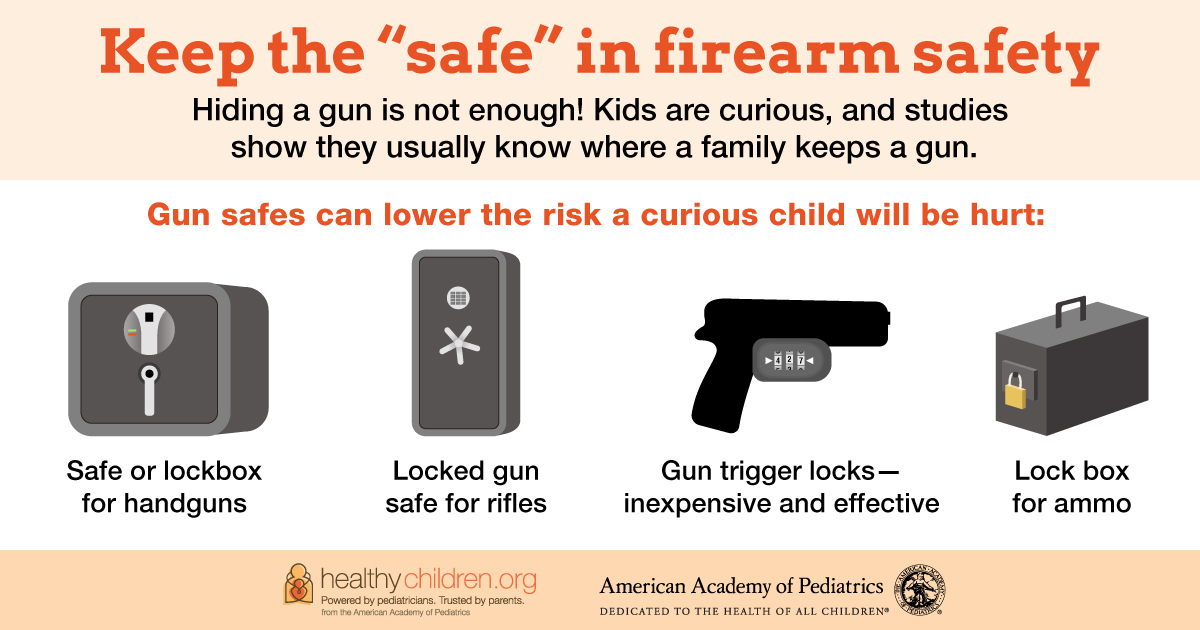
Credit: www.healthychildren.org
Community Resources
Gun safety is crucial for every family. Community resources can help parents ensure their homes are safe. These resources offer vital information and support. Here are some key areas to explore:
Local Safety Programs
Many communities offer local safety programs. These programs teach families about gun safety. They provide hands-on training for parents and children. Some programs may include:
- Workshops on secure gun storage
- Classes on gun safety rules
- Demonstrations on how to use gun locks
Check with your local police department for available programs. Schools and community centers also host these events. Participation can greatly improve your family’s safety knowledge.
Support Networks
Support networks are essential for parents. They connect you with other families who prioritize safety. These networks provide a platform to share experiences and tips.
Some ways to find support networks include:
- Joining local parenting groups
- Attending community meetings
- Participating in online forums
These networks often collaborate with experts. They offer regular updates on safety practices. Engaging with them can keep you informed about the latest safety measures.
| Resource | Contact Information |
|---|---|
| Local Police Department | 123-456-7890 |
| Community Center | communitycenter@example.com |
| Parenting Group | parentinggroup@example.com |
Utilizing these resources can make a significant difference. Stay proactive and keep your family safe.

Credit: geltoynation.com
Frequently Asked Questions
What Are Basic Gun Safety Rules For Parents?
Always keep guns unloaded and locked away. Educate children about gun dangers. Store ammunition separately. Use gun safes and trigger locks.
How Can Parents Teach Kids About Gun Safety?
Explain that guns are not toys. Encourage kids to tell an adult if they find a gun. Use age-appropriate language.
What Should Parents Do If Kids Find A Gun?
Instruct children to never touch the gun. They should leave the area immediately and inform an adult right away.
Are Toy Guns Safe For Children?
Toy guns can confuse kids about real gun dangers. It’s better to avoid realistic toy guns and teach proper gun safety.
Conclusion
Prioritizing gun safety is crucial for every parent. Educate your children and secure firearms properly. These steps can prevent accidents and save lives. Stay informed and vigilant to maintain a safe environment. Remember, responsible gun ownership is essential for your family’s protection and peace of mind.

